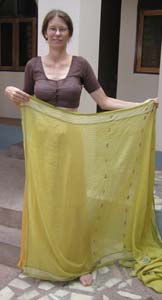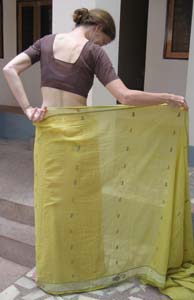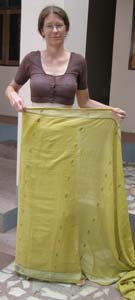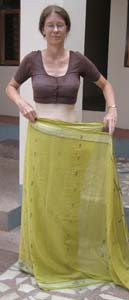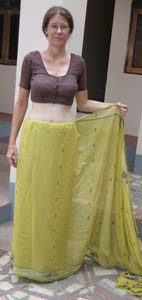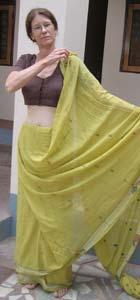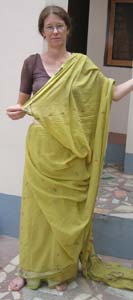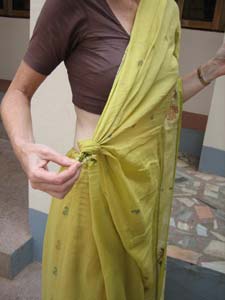The Bengali Drape
You still see this drape in the middle of Calcutta, worn mostly by village women or older city dwellers. The drape is much easier than the nivi, with two large pleats in front and the pallu wrapped twice around the top. Traditionally the pallu end was weighed down with a house key - usually of the heavy skeleton variety. This drape looks most authentic with Bengali hand loomed sarees - if you don't have one, there's a great selection in the sarishop. Otherwise lighter weight cottons with smaller borders are recommended.





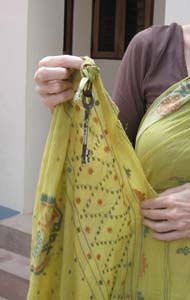
|
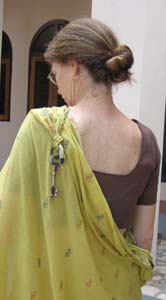
|
The Bengali drape highlights the pallu, which is then again draped over the left shoulder, with just the very end corner going over the shoulder. The bottom border falls in a straight line down from the left shoulder. To keep it in place, the tradition has been to tie the house key to the end as a weight. You can use your imagination if you don't have a skeleton key to use - how about a petite purse or little brass bell?
|
All images and text © Sarisafari
|




